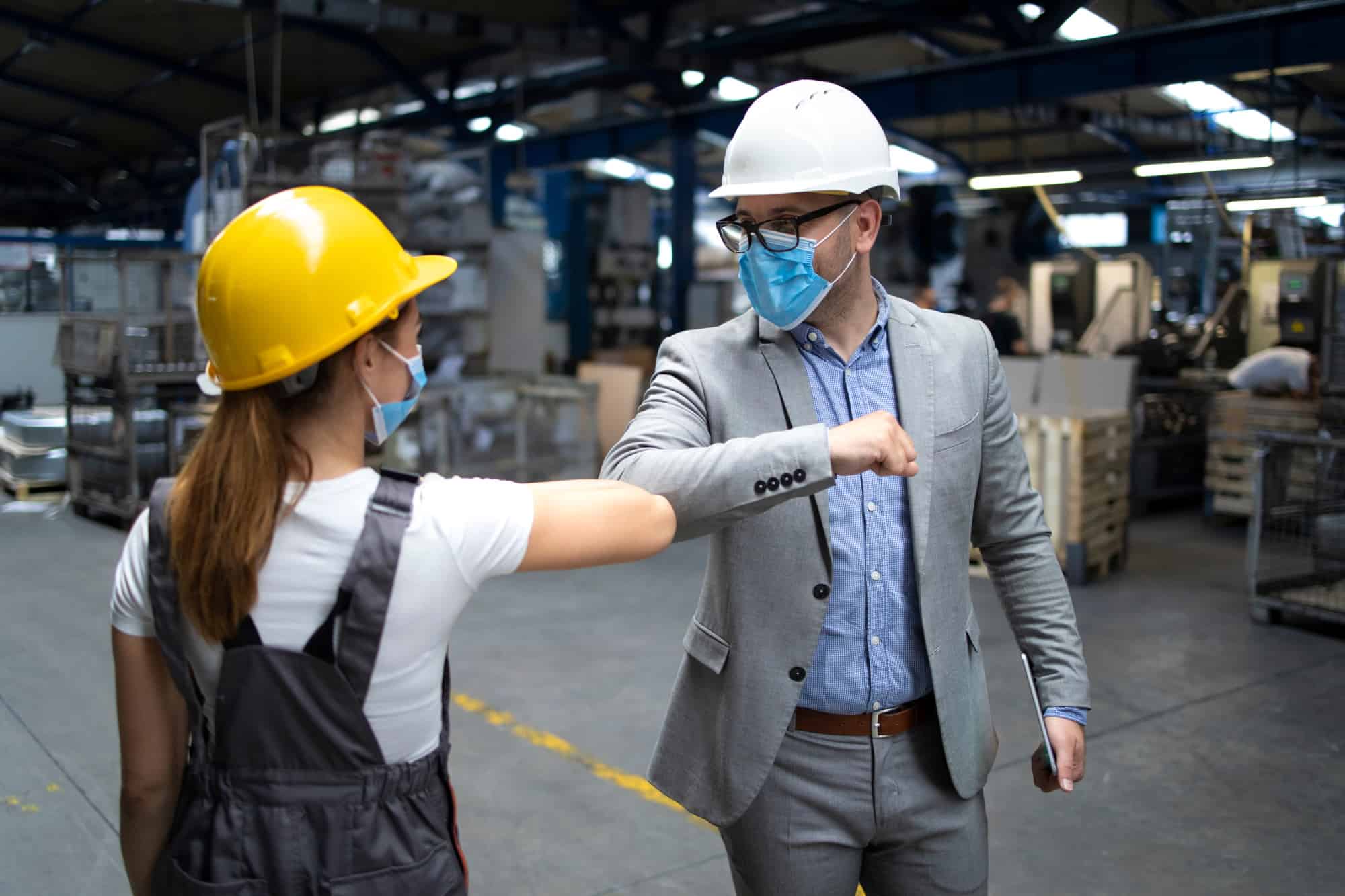Synopsis: Having the ability to anticipate the changes in demand and supply chain disruptions before they occur is a dream of any supply manager. Here are the steps manufacturers can take to get there.
Global manufacturing and supply chains are experiencing a wide range of effects as a result of the lockdown measures. The pandemic affects both the demand and the supply side of the equation, having a far-reaching effect across the worldwide supply chain.
Issues with supply
On the one hand, the demand in the food and medical supply industries has exploded. As a result, manufacturers in these industries have experienced extreme difficulties with sourcing, scratching wherever they could for raw materials and parts.
The situation is compounded by regulatory constraints in those highly regulated industries. Due to regulations and compliance requirements, manufacturers can’t just ‘find another supplier,’ since their production process is restricted to specific approved suppliers that are defined in their filing process.
Unfortunately, the actions they can take to deal with these extreme systemic shocks are very limited.
Issues with demand
But the effects of the COVID-19 pandemic are multi-dimensional, and affects not only the supply side, but also severely constrains demand in certain industries. For example, a completely different scenario played out in the automotive industry, where the demand dropped. Because the car manufacturing production in Europe and the U.S. has come to a nearly a complete standstill, supply wasn’t a pressing concern.
However, down the supply chain, tier-one and tier-two suppliers have experienced a severe drop in demand. As a result, some of them had to shut down, not necessarily because of quarantine or government restrictions, but simply because they didn’t have anybody to sell to.
Immediate Actions manufacturers took in the wake of the pandemic
Many manufacturers have found themselves facing a complete uncertainty regarding the supply chain without having the ability to plan ahead or take into account different parameters that they used to count on in the past.
There are several ways manufacturers have reacted to this system shock. Below are a few examples.
Focusing on sourcing and logistics
For regulated companies with strong demand, supply was a significant issue, mainly because they can’t just change suppliers. The only thing they could do is improve communications, building more systematic and effective ways to communicate and work with the existing suppliers. Moving forward, the long term response must be looking closer at the bill of materials and defining which items need additional sourcing.
Manufacturers in regulated industries focused on what they could – the logistics. Making sure that all the supplies are being produced, shipped, and warehoused in the most efficient manner. So instead of sending their suppliers an order once a month or having a conversation once a week, they had daily or hourly conversations, trying to make sure that their supply was secure. They also focused their efforts on monitoring where those supplies were at any given time.
For non-regulated industries with high demand, the main activity was sourcing. These less regulated companies focused on finding many newer, more local suppliers.
Increasing inventory levels
For years there was a push to reduce inventories. But now we see a trend reversal across the board. Most manufacturers are now going from storing one month of inventory as a standard to two or three months.
The idea is that whatever happens, a manufacturer will be able to find a solution for supply issues within a three month safety window. However, this strategy is not sustainable in the long term, as it is prohibitively expensive and negatively affects the competitiveness of a manufacturer.
Increasing inventories makes sense only as a short-term measure to address immediate risks— in the long term we need to find a better solution.
Lessons learned
Expand the horizon of your supply chain beyond tier-1 suppliers
Before COVID19, most manufacturers didn’t really know who the ‘suppliers of their suppliers’ were, and they didn’t really care. But now they must expand their supply chain horizon if they want to ensure production long term.
By the way, opaqueness of the supply chain doesn’t affect only manufacturers in regulated industries. Many manufacturers, especially if they are midsize, often don’t have robust procurement processes in place. The majority of the raw material is often coming from a single source, even if they’re not regulated.
The need for better analytics and tracking systems
95 percent of manufacturers don’t have visibility beyond their tier-one suppliers. Even large companies only ask who their tier 2 suppliers are once a year by sending out a low-priority questionnaire. Visibility into the supply chains must improve significantly as we adjust to the new reality.
Today, the visibility of supply chains beyond tier-one suppliers is a necessity. However, there aren’t any sound systems available that can shed light on the supply networks beyond tier-1.
Managing supply chains post-COVID
Connecting with all suppliers in your chain
Currently, if a manufacturer wants to gain visibility into their supply chain, they need to hire a dedicated team to staff the phones and keep calling and checking in on order statuses. Understanding where every supply part around the world is a challenge. No one has real visibility into their supply chains, and most manufacturers have none at all.
As you know, one issue here is the complexity: we have the supplier, the forwarder, the shipping companies, customs, and ERP systems. Things get even more complicated when we go beyond suppliers to logistic partners.
The availability of data on a real-time basis is currently mostly achieved by creating a war room. During the first phase of the crisis, many manufacturers tried to provide real-time visibility into their supply networks by relying on 19th-century technology – a phone line and a piece of paper.
To track our supply chain effectively, we must create a dashboard that connects supply chain networks visually. So if a system can detect a delay at any node of the network, it issues an alert.
It is not enough to see that the supplies are not where they need to be when they are already late. It’s preferable to be alerted about any problems a month or two in advance, if possible.
But for that, we need real-time data. The first order of business in dealing with the consequences of the current crisis is to connect your entire supply network into one centralized system.
Real-time visibility for all orders
Despite having hundreds, or sometimes thousands of SKUs from numerous suppliers and thousands of orders at any given time, most manufacturers only have visibility into the buying process when they receive a document or the goods themselves.
This is not enough in a crisis. And companies realize that it’s not enough because they need to know at any given time what are the risks associated with late deliveries. Supply chain managers want to know whether the order is going to arrive on time or not, not to guess or be surprised.
Instead of having an army of people to man the phones calling suppliers non-stop, we need to tap the data at hand.
The need for better analytics and tracking systems
Anticipating changes in demand and supply chain disruptions before they occur is a dream of any supply chain manager. But actually, this dream is not out of reach. We have enough data to make reasonable predictions. The trick is to gather all this data into a centralized system and provide actionable insight to supply chain managers.
Now that we have dealt with the initial system shock to the supply chain in the wake of the COVID19 pandemic, we must prepare for the days after the crisis by improving the visibility into the supply chains and connecting all data points into one centralized system.
See how Magic’s manufacturing consultants can make this a reality for your business with FactoryEye.
Request an Industry 4.0 Consultation
Eli Pelleg is a manufacturing veteran with decades of experience. He started out working in IT for midsize factories, focusing on logistics processes. Afterwards, he moved to Intel, where he experienced first-hand the complexity of managing chip-making operations, deploying 25-30 types of machines, with over 200 processes. Following Intel, he served as an advisor for companies like Siemens, L’Oreal, Teva, and HP.




